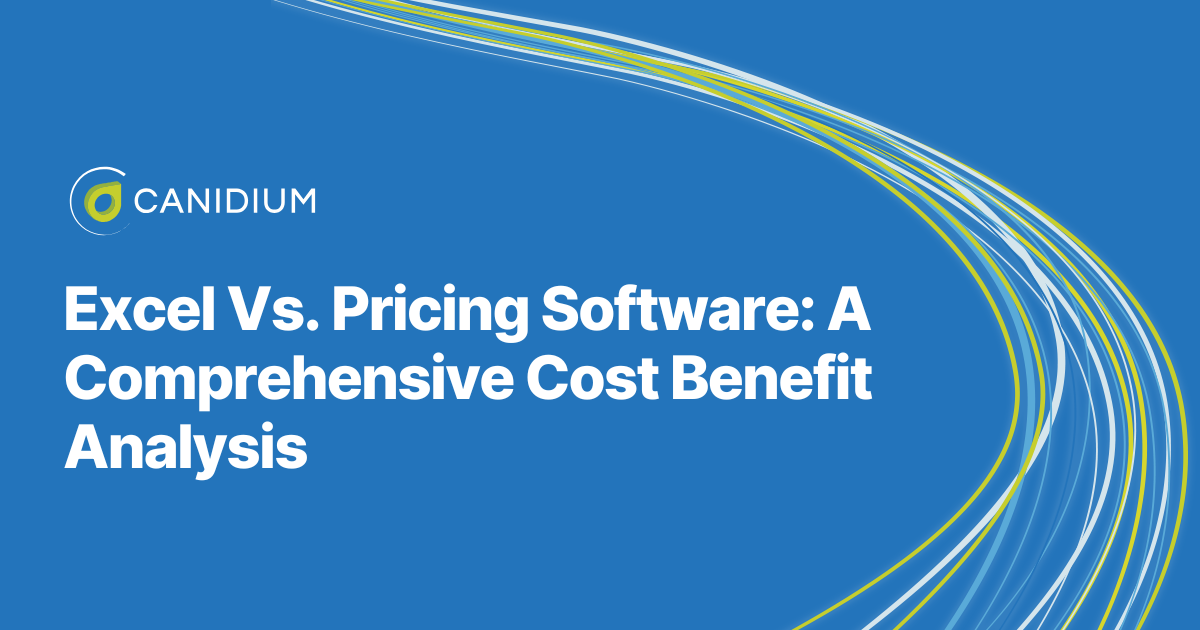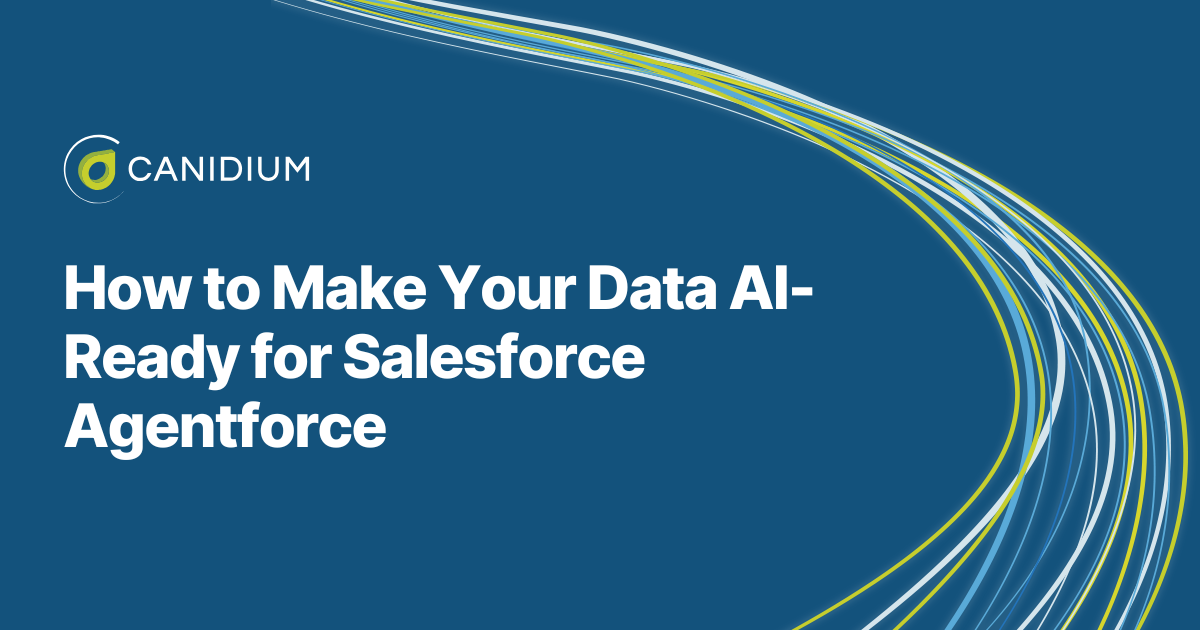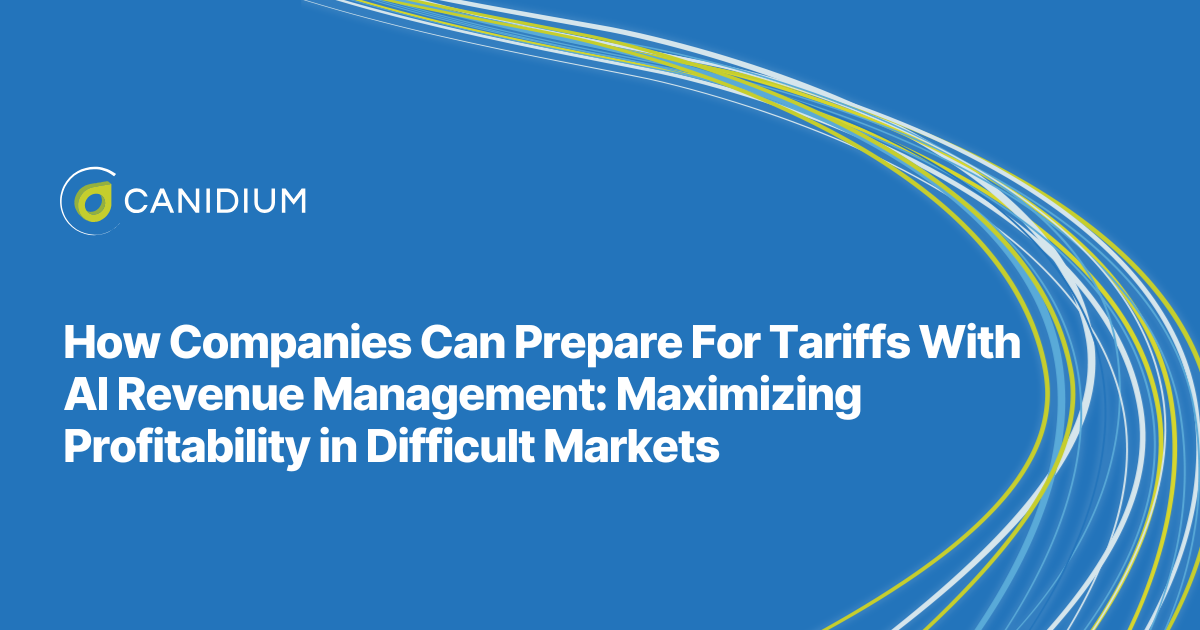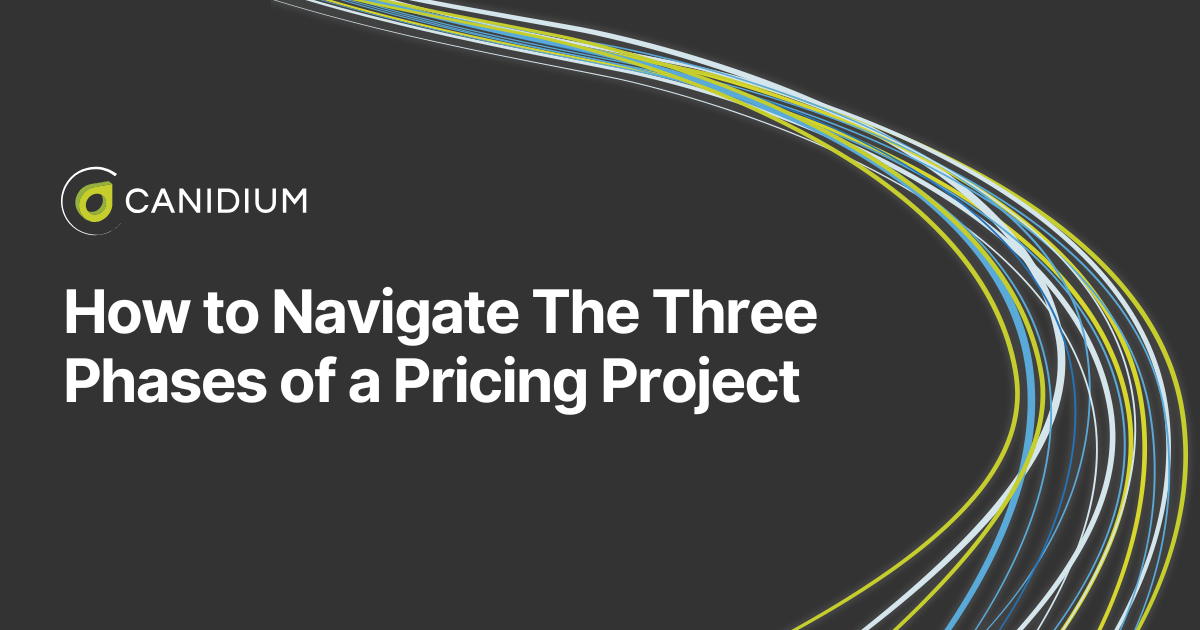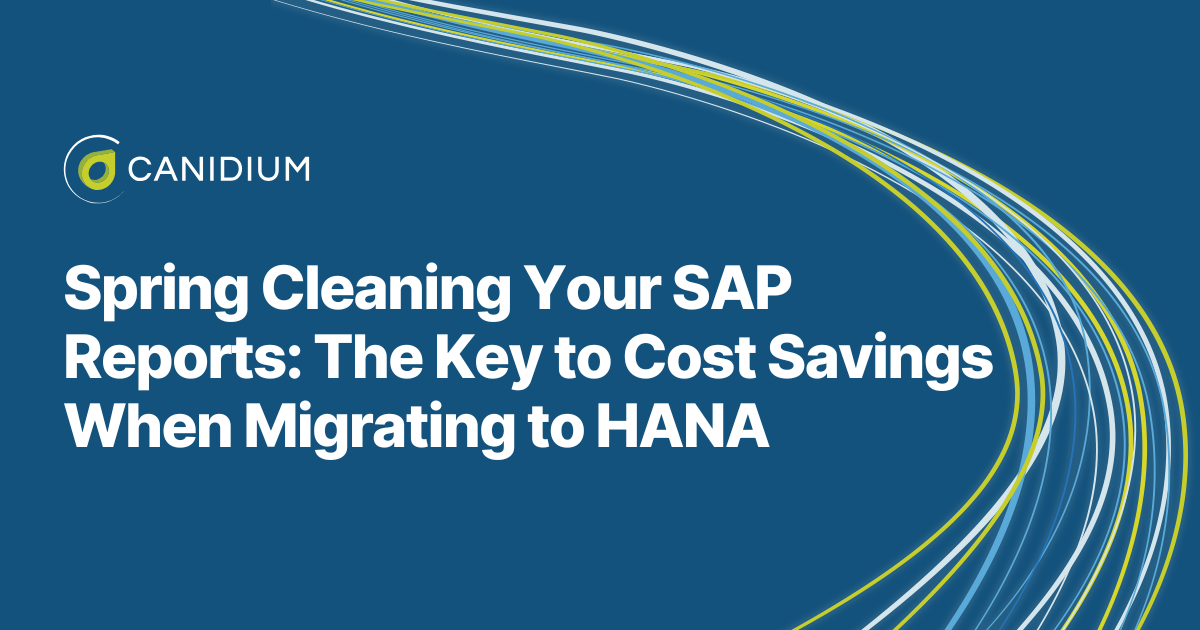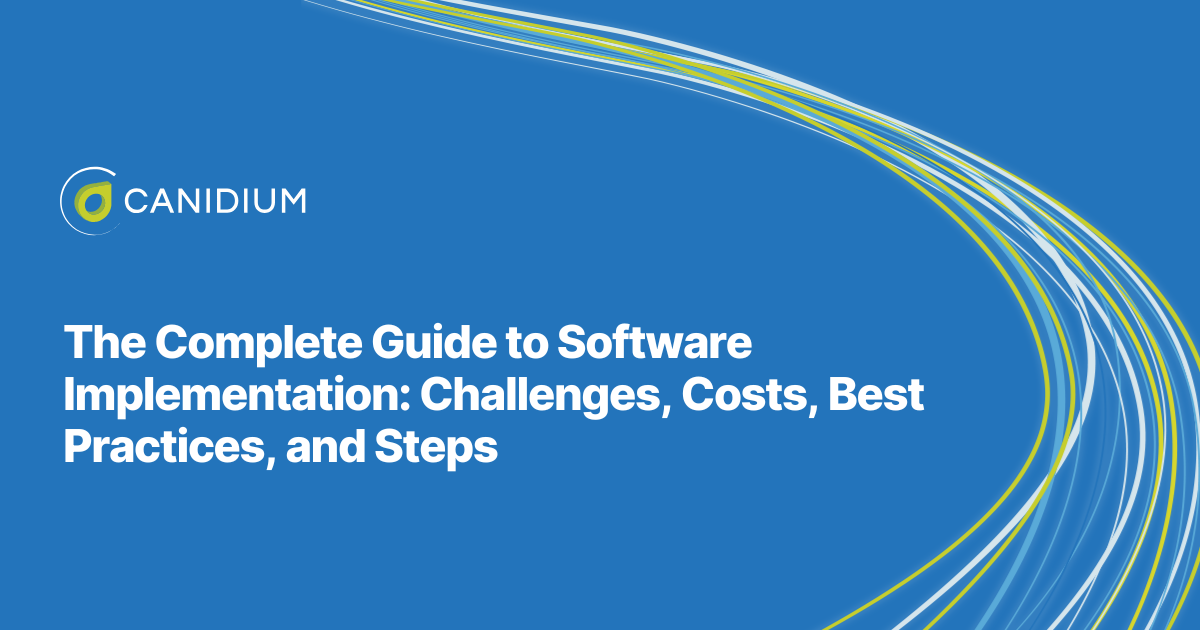As your business grows, so does the amount of software solutions you need to adopt. However, amongst all the digital transformation investments you could make, the most valuable could be pricing software.
At Canidium, we educate organizations on the array of pricing tools at their fingertips, helping online stores and brick-and-mortar retailers choose between pricing software options.
This article compares Excel and pricing software to help you determine if the additional features and strategic advantages of advanced pricing tools are worth the investment costs.
Why Companies Switch From Excel to Pricing Software
In all likelihood, the majority of your employees have used Excel in some capacity. The spreadsheet tool is ubiquitous, and for good reason. Excel is renowned for its versatility and accessibility; it can be used for an extensive array of business functions spanning departments. Its capabilities are sufficient for basic pricing strategies, especially in environments with limited product lines and straightforward pricing models. Yet, Excel's limitations become apparent as businesses grow and competitive pricing strategies become more intricate due to factors like diverse product ranges, fluctuating raw material costs, more diverse customer segments, and multi-regional operations.
Pricing software, designed with modern business challenges in mind, offers automation, advanced analytics, and real-time pricing capabilities far beyond what Excel can provide. Much of the time, the transition from Excel to specialized pricing optimization software is driven by the need to manage complex pricing structures efficiently and minimize the risk of costly errors, such as those seen in manual data entry and spreadsheet management. However, perhaps the most compelling reason organizations invest in pricing software is the potentially significant margin improvements these tools can bring.
A Point-By-Point Comparison of Excel Vs. Pricing Software
A growing number of companies are ditching manual, spreadsheet-based pricing processes in favor of more advanced software. The Pricing Optimization Software Market size was valued at USD 3.76 Billion in 2024 and is projected to reach USD 11.22 Billion by 2031, growing at a CAGR of 16.16% from 2024 to 2031. However, this does not necessarily mean pricing software is the right solution for every business.
Price optimization software requires significant investment, meaning the benefits need to outweigh the upfront costs for your business. To determine if pricing software will yield returns, consider the following critical comparison points between the two options.
Excel Vs. Pricing Software: Which Solution Costs More?
Excel's affordability is undeniable. Due to its widespread use and familiarity, it is often seen as a cost-effective solution. On the other hand, pricing software does represent an investment. The cost of implementing a solution clearly exceeds that of Excel. If you are comparing the two options solely on the basis of which is more expensive upfront, Excel is the clear frontrunner.
However, the hidden costs of manual operations and error-prone processes that come with Excel can accumulate, especially as business demands increase. In contrast, while the initial investment in pricing software may be higher, its additional features justify the expense for most companies. Automation reduces the labor-intensive data entry and updates process, minimizing errors and freeing up valuable resources for strategic activities rather than routine data management. Plus, the tool is designed to not only facilitate more sales but also maximize profitability with optimized prices, resulting in a combined cut in operating costs augmented by an approach to pricing that facilitates an increase in revenue.
Excel Vs. Pricing Software: Analytics and Reporting Tools
Pricing software excels at providing actionable insights into pricing dynamics, enabled by additional features like advanced analytics and machine learning algorithms. These tools offer a comprehensive view of pricing—from list prices to net prices—allowing businesses and sales teams to optimize their strategies in real-time.
While capable of basic data analysis, Excel lacks the range of features required to perform complex pricing optimization and real-time analysis without extensive manual work. This limitation can hinder your ability to respond swiftly to market changes with data-driven decisions or dynamic prices, which is especially damaging during times of economic volatility. At the same time, it does not host the advanced features required to analyze competitor prices or the impact of strategic initiatives such as value-based pricing, leaving you guessing at the impact of pricing strategies.
Excel Vs. Pricing Software: Ease of Implementation
As far as ease of implementation is concerned, Excel is undoubtedly easier. Price optimization software is feature-rich, leveraging advanced automation, AI, analytics, and reporting tools. Consequently, installing price management software is a longer and more complex process, generally requiring the support of a software implementation partner.
Another critical aspect is the integration of pricing tools with other business systems. Excel, primarily a standalone application, often requires additional efforts to bring data in from across multiple systems, which can be cumbersome and error-prone. Pricing software, on the other hand, is designed to integrate seamlessly with other enterprise systems, providing a unified platform for pricing management.
Excel Vs. Pricing Software: Long-Term Outlook and Scalability
Excel is a powerful tool for data analysis and has been the go-to solution for many businesses for years. Its accessibility and flexibility allow for immediate deployment and customization. However, as a business grows, its data and operational complexities increase. Excel's initial advantages can quickly become scalability bottlenecks. Many organizations today trade Excel files over email for edits and approvals, which can easily lead to mistakes and confusion from having different versions of the same spreadsheet floating around the organization. Pricing software brings automated workflows set up based on your specific business rules, resulting in a single source of truth and approvals triggered only when required.
Data Volume and Complexity
Excel struggles with large datasets. As businesses grow and data accumulates, Excel's performance can degrade, leading to slow processing times and an increased risk of crashes, thereby limiting your ability to make data-driven pricing decisions.
Error Frequency
With scalability comes an increased risk of human error in data entry and formula management. As we all know, one misplaced formula error in Excel can negatively affect the accuracy of all your work. Excel-based pricing only magnifies these risks, whereas automation-based prices through pricing software lead to accurate, repeatable, and scalable pricing processes.
Integration Issues
Excel lacks robust integration capabilities with other business systems, such as CRM and ERP. This limitation becomes more pronounced as businesses scale and require seamless and real-time data flows between systems.
Pricing Software
On the other hand, pricing optimization software is specifically designed to handle the complexities and demands of large-scale business operations. Its capabilities are built around the needs of growing businesses that require efficient, accurate, and scalable pricing solutions that can handle diverse customer segments.
Handling Large Datasets
Unlike Excel, pricing software can efficiently manage large volumes of data without performance degradation. This capability is crucial for businesses that need to process vast amounts of data, including multiple sources such as product prices, sales cycles, price history, competitor prices, cash flow, customer demand fluctuations, customer behavior, pricing tiers, and market segments. These additional features provide a significant competitive edge.
Advanced Automation and Accuracy
Pricing software reduces the reliance on manual data entry and updates through automation. This not only minimizes human errors but also ensures that pricing decisions are based on the latest data, enhancing accuracy and responsiveness while also ensuring business success.
Seamless Integration
Modern price optimization software offers robust integration with other business systems, facilitating a unified approach to data management and analysis. This integration provides a holistic view of business operations. It enables coordinated data-driven pricing decisions based on actionable insights across departments.
Dynamic Pricing Capabilities
With standout features like AI and machine learning, pricing software supports dynamic pricing strategies that can adapt to market changes in real-time. This adaptability is essential for businesses operating in volatile markets or those that need to adjust their pricing strategy frequently.
Excel Vs. Pricing Software: ROI and Long-Term Benefits
The long-term outlook for businesses using Excel for pricing is constrained by the tool's inherent limitations in handling complex, large-scale operations. While Excel will continue to serve as a valuable tool for specific tasks and smaller-scale operations, its utility in maintaining complex pricing structures and facilitating custom prices is limited. It does not carry the additional features required to analyze price history and market demand to create competitive prices. As a result, you may lose potential customers.
Moreover, Excel does not boast the user-friendly interface that many types of pricing software offer to increase business efficiencies. Data-driven insights may remain unactioned as spreadsheets cannot offer customizable reports to augment business decisions like many types of pricing software are capable of.
Conversely, pricing software is designed to grow with the business. Its scalable nature, enhanced by continuous updates and technological innovations, ensures that it can meet the evolving needs of your operation and adapt to new business goals. This makes pricing software a strategic investment for companies focused on long-term growth and market competitiveness.
Put simply, business owners who intend to scale to a mid- or enterprise level will need centralized price management, custom reports, automation, accuracy, additional features, actionable insights, and enhanced capabilities of a pricing solution to be competitive.
Weighing the Benefits and Costs to Find the Right Option for You
Transitioning from Excel to specialized pricing software represents a strategic move toward optimizing pricing operations. While the costs of a pricing solution implementation are significant, the benefits of automation, enhanced insights, and integration capabilities can offer significant returns that far exceed the initial investment. In other words, businesses that invest in these advanced tools can generally expect to see improved profit margin performance, resulting in sustained long-term revenue growth.
For example, consider what a pricing solution implementation could do for a $2 billion company. If a solution such as Pricefx helps improve pricing strategies and profitability by just 1%, this could lead to a $20 million increase in profits annually. This substantial figure goes directly to your bottom line, beyond the software costs requiring no additional resources or operational expansions to facilitate.
The returns you will see from investing in pricing optimization software depend on factors such as your company's business model and market sector, meaning your ROI will be unique to your organization. However, you can take Pricefx's own estimation into account. The company estimates that organizations may see up to a 70x ROI in the first 12 months with an 8.4% profit margin improvement. At the same time, the total costs vs. total profitability gain for the solution are also estimated by Pricefx to be 3-6%.
Of course, these figures are simply estimates and do not cover all potential scenarios. Your ROI will be, in part, determined by your unique business factors. However, we can use Pricefx's estimates to calculate a hypothetical business's annual profit increase.
Let's use Pricefx's estimate of an ROI up to 70x in the first year and estimate the gross profit margin or improvement between 3-6%, corresponding to 300 to 600 basis points, for a 7 billion dollar business. In this scenario, by spending $1 million, the company sees a $70 million improvement in profit in just the first 12 months after implementation. Moreover, the returns have the capacity to further increase from this point as well. In fact, Pricefx reports their estimated average 5-year customer gain in profit to be €520 million, or approximately $546 million when converted to U.S. dollars, based on a conversion rate of 1.05 USD for each Euro.
The following chart estimates the implementation costs for a pricing project before licensing fees:
-1.png?width=1920&height=1080&name=Medium%20(7)-1.png)
Should You Invest in Pricing Software?
Excel, while familiar and versatile for basic pricing strategies and smaller datasets, reveals its limitations as business demands grow and optimal pricing strategies become more complex. Compared to Excel's cost-effectiveness and familiarity, pricing optimization software requires a higher initial investment but offers significant returns through automation and increased revenue. It minimizes costly errors and frees resources for the development of effective pricing strategies. Additionally, pricing software excels with advanced analytics and machine learning, handling large datasets efficiently and providing deeper insights that can help expand your customer base.
At the same time, dynamic pricing software's integration capabilities, scalability, and intuitive interface prove essential for large-scale operations. They ensure unified data management across departments and maintain performance under complex demands. Pricing software's long-term benefits include continuous adaptation through updates and innovations, enhancing scalability and utility for business growth.
Overall, the decision can be boiled down to your specific business objectives. If you are looking for an inexpensive short-term solution and are willing to forego the long-term costs associated with manual processes and feature limitations, Excel is the best option for you. Alternatively, if you intend to invest in a long-term solution that scales with your business, cuts costs with automation, and fosters revenue growth, pricing optimization software is right for you.
To learn more about implementing dynamic pricing software at your organization, check out our Pricefx Buyer's Guide.


